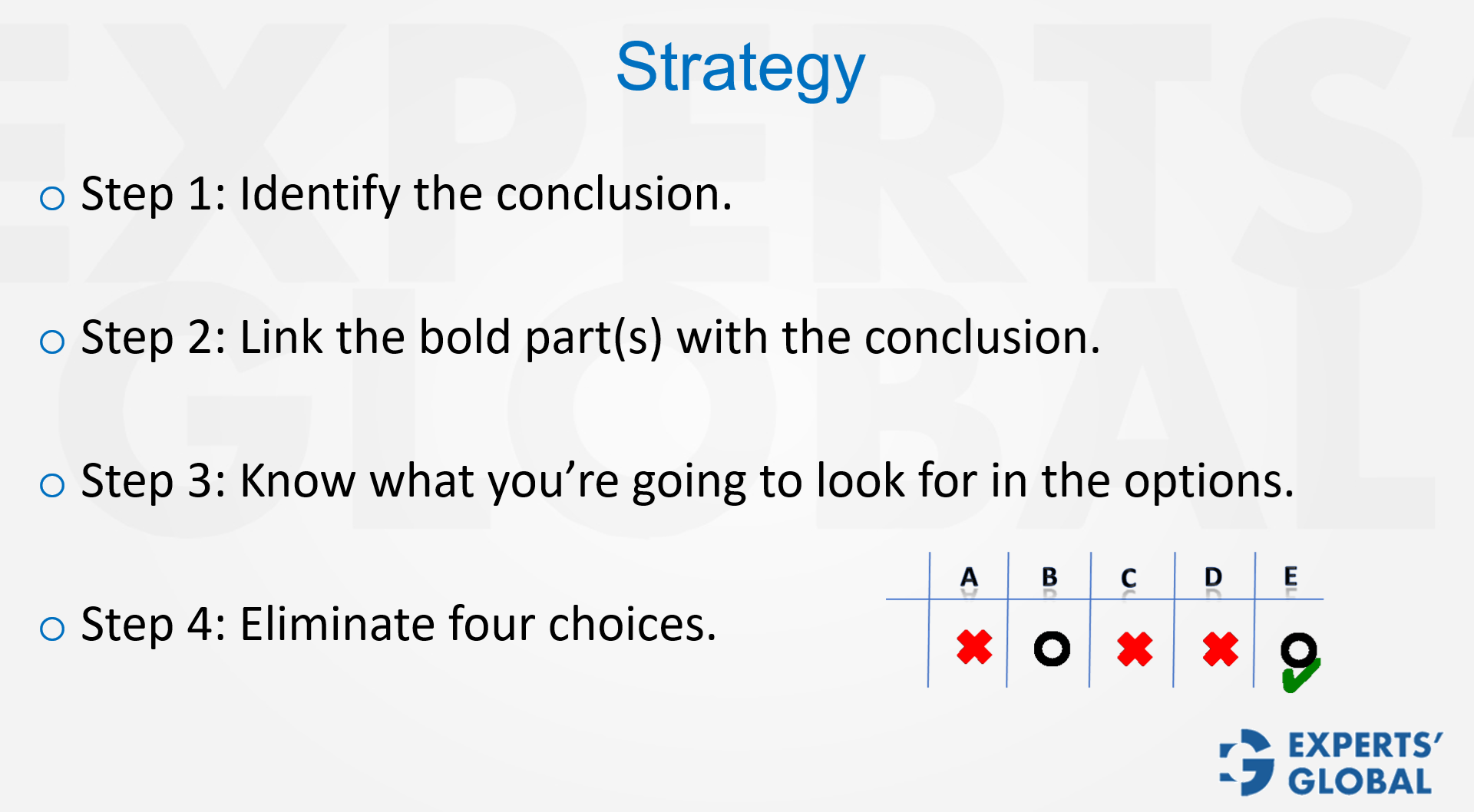Invest 30 seconds...
...for what may lead to a life altering association!
Help Line
- +91.8800.2828.00 (IND)
- 1030-1830 Hrs IST, Mon-Sat
- support@expertsglobal.com
...for what may lead to a life altering association!


One of the major hurdles in CR Boldface questions is the complex vocabulary, which makes regular review of the words frequently tested in critical reasoning a vital part of GMAT practice. Within this structured sequence, we cover five vocabulary drills, and this article features the fourth. Please watch the video attentively and then read through the detailed written explanation that follows.

In GMAT boldface questions, you are presented with a passage that contains one or more bolded parts. The objective is to identify the role those portions serve within the argument. Since the vocabulary in such questions is often challenging, and accurately recognizing the function of each bolded section is critical, practicing with a few vocabulary drills in this area proves highly beneficial.
Please read the following argument, carefully:
The GDP of Xitora has grown by 15% during the tenure of the current political party. This is the highest growth during any tenure over the previous 50 years. Since the GDP growth is a fine indication of the economic growth of a nation, the party must be applauded for its role. However, the recent opinion polls reflect a steep decline in the popularity of the party owing to its perceived softness on long-standing social and diplomatic issues. Therefore, the party is unlikely to win another term in the forthcoming elections.
Please go through the following list of terms. See which of these terms apply to the bolded portion. Once you have arrived at your answer, read further to see an explanation for each option.
GDP growth has been great –> party deserves credit –> party has been soft on other issues –> the party is not likely to win (main conclusion)
The bolded section is not the main conclusion of the passage. The main conclusion is that the party is unlikely to win the next election. The bolded section above has been used as evidence to support this conclusion.
As mentioned above, the bolded section is not a conclusion; it is evidence.
The bolded section is a fact, as the opinion polls did happen, and there are certain outcomes to them, as described in the passage.
The bolded section is not an opinion. While opinions may be subjective, opinion polls are objective, and the result will be quantitative.
The bolded section cannot be called a judgment for similar reasons as to why it cannot be called an opinion. Since opinion polls are objective, terms such as fact and evidence are better fits for this question.
Circumstance is not a very strong choice, but it can work.
This is a very good choice, as the information presented in the boldface is being used to support the main conclusion.
The bolded section is clearly not making a prediction of any sort.
The bolded section states information and does not make any assumptions, so this is a poor choice.
After some deliberation, we can conclude that consideration can also be used as the boldface has been considered for reaching the argument’s conclusion.
Thus, fact, evidence, circumstance, and consideration are the terms that can be used for this boldfaced section. Of these terms, evidence is the most fitting, because that is the role that this boldface is playing in the argument. The poll results are being used as evidence to support the main conclusion.
A conclusion is the central point the argument seeks to establish. In this case, the polls themselves are not a conclusion but rather a piece of information that may support or weaken one.
Intermediate conclusions are stepping stones that lead to the main conclusion. The polls here are not leading to another claim; they are standing as data that informs the discussion.
Yes, the polls can be considered a fact because they are concrete findings. But more importantly, they serve as evidence since they provide information that can support or challenge the main conclusion of the argument.
Out of all options, evidence is the most accurate role for this boldface. It is data that is being used to assess the broader claim, and on the GMAT, such clarity makes the difference between confusion and accuracy.

Link every boldface to the main conclusion before labeling it. Distinguish fact from evidence by asking whether the statement merely reports or supports. Reserve conclusions for claims the argument seeks to prove. Treat opinion, judgment, and circumstance as fits only when function warrants. Build habits of mapping, expectation setting, and elimination. This discipline sharpens GMAT Critical Reasoning, strengthens MBA applications, and trains you to communicate decisions with clarity and confidence.
Boldface practice is a lesson in integrity. You slow down, map the claim, and let evidence earn its place. That is how strong GMAT preparation feels. The same posture anchors MBA applications. You gather proof, test assumptions, and reach a conclusion that aligns strengths with the program and purpose. Life answers to the same method. Facts first, meanings next, decisions last. When you classify well, you think clearly. When you think clearly, you act kindly and decisively. Keep choosing structure over noise, and your choices will reflect wisdom, humility, and steady resolve. That is how leaders grow through disciplined thinking.